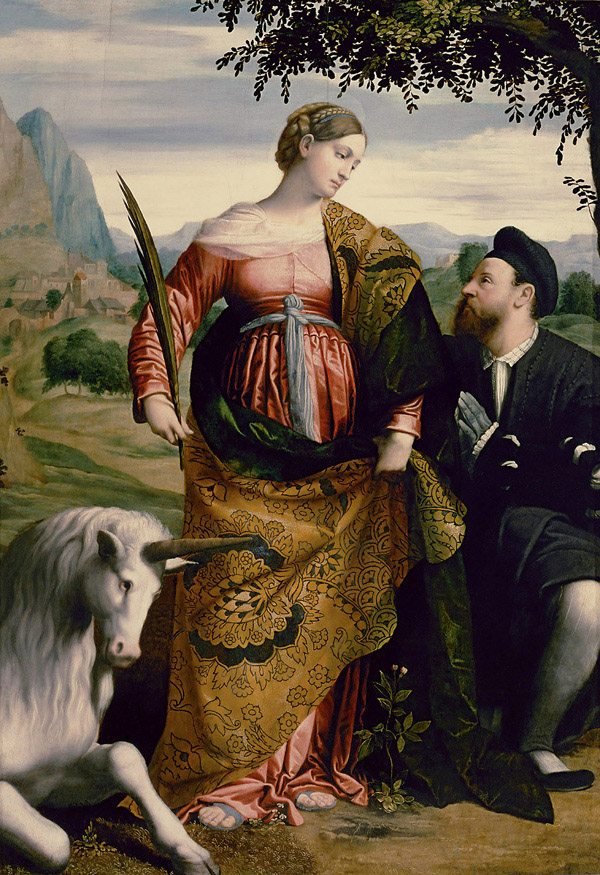Not much is known of Justine (or Justina), the patron saint of Padua. Medieval histories describe her as a follower of Saint Peter the Apostle, though her life around 300 CE makes this improbable.
Her story is mentioned in Foxe’s Book of Martyrs, which states, “Justina, a young lady of Antioch, whose birth, beauty, and accomplishments, rendered her the admiration of all who knew her.” She is said to have converted many pagans to Christianity, including suitors like Cyprian. Yet during the persecutions of Christian by Emperor Diocletian around 304 CE, Justina was captured and tortured. Refusing to renounce her faith, she was beheaded.

The Martyrdom of St. Justine, Veronese, c.1573, Oil on canvas, Uffizi Gallery, Florence. WikiCommons.
Veronese, known for his dramatic color and narrative, depicts the moment when Justine’s murderers were gathered round in the act of stabbing her. They all seem pretty relaxed about what they are doing, justified by Roman law, since this was a fairly common occurrence at the time. Justine is not relaxed; in fact, she appears terrified of the dagger about to be plunged into her chest. The stark white of her skin and dress is in contrast to the darker colors of the surrounding figures, emphasizing her purity and innocence.
Additionally, the background features the majestic architecture of Ancient Rome, with great columns dominating the background. This is typical of Veronese’s style, which featured majestic architecture and glittering pageantry to emphasize the dramatic scenes he painted.

Saint Justine with the Unicorn, Moretto da Brescia, c.1530-1534, Oil on panel, Kunsthistorisches Museum, Vienna, WikiCommons.
Justine is often depicted with a unicorn symbolizing her virginity, as seen here in this painting by da Brescia. She also holds a palm frond, a common symbol in Western Christian art associated with martyrs, as it represents the victory of spirit over flesh.
In da Brescia’s painting, historical accuracy is lost as he styles the dress in the manner of the Italian Renaissance. Justine is seen in high style, with patterned dress, perhaps being courted by one of her converted suitors. Despite his attentions, she appears indifferent — maybe even annoyed.
